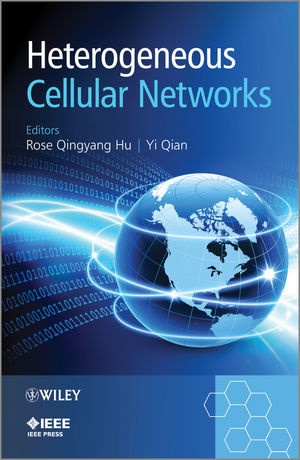Read more
Informationen zum Autor Rose Qingyang Hu is Associate Professor in the Department of Electrical and Computer Engineering at Utah State University. Her current research interests include interference management, cooperative communications, cognitive radio, mobility, security, QoS and green networking in wireless networks. Yi Qian is Associate Professor in the Department of Computer and Electronics Engineering, University of Nebraska-Lincoln (UNL). His research interests include information assurance and network security, network design, network modelling, simulation and performance analysis for next generation wireless networks, high-speed networks and the Internet. Klappentext A timely publication providing coverage of radio resource management, mobility management and standardization in heterogeneous cellular networksThe topic of heterogeneous cellular networks has gained momentum in industry and the research community, attracting the attention of standardization bodies such as 3GPP LTE and IEEE 802.16j, whose objectives are looking into increasing the capacity and coverage of the cellular networks. This book focuses on recent progresses, covering the related topics including scenarios of heterogeneous network deployment, interference management in the heterogeneous network deployment, carrier aggregation in a heterogeneous network, cognitive radio, cell selection/reselection and load balancing, mobility and handover management, capacity and coverage optimization for heterogeneous networks, traffic management and congestion control.This book enables readers to better understand the technical details and performance gains that are made possible by this state-of-the-art technology. It contains the information necessary for researchers and engineers wishing to build and deploy highly efficient wireless networks themselves. To enhance this practical understanding, the book is structured to systematically lead the reader through a series of case-studies of real world scenarios.Key features:* Presents this new paradigm in cellular network domain: a heterogeneous network containing network nodes with different characteristics such as transmission power and RF coverage area* Provides a clear approach by containing tables, illustrations, industry case studies, tutorials and examples to cover the related topics* Includes new research results and state-of-the-art technological developments and implementation issues Zusammenfassung Focusing on current advances in heterogeneous cellular networks, this book enables readers to better understand the technical details and performance gains that are made possible by this state-of-the-art technology. Inhaltsverzeichnis Contributors xiii Preface xv 1 Overview of Heterogeneous Networks 1 1.1 Motivations for Heterogeneous Networks 2 1.1.1 Explosive Growth of Data Capacity Demands 2 1.1.2 From Spectral Efficiency to Network Efficiency 3 1.1.3 Challenges in Service Revenue and Capacity Investment 5 1.2 Definitions of Heterogeneous Networks 5 1.3 Economics of Heterogeneous Networks 6 1.3.1 Total Cost of Ownership 7 1.3.2 Heterogeneous Networks Use Scenarios 8 1.3.3 General Tends in Heterogeneous Networks Development 10 1.4 Aspects of Heterogeneous Network Technology 10 1.4.1 RF Interference 10 1.4.2 Radio System Configuration 12 1.4.3 Network Coupling 13 1.4.4 User and Device Credential 14 1.4.5 Interworking 15 1.4.6 Handover 16 1.4.7 Data Routing 18 1.4.8 Quality of Service 19 1.4.9 Security and Privacy 21 1.4.10 Capacity and Performance Evaluation 22 1.5 Future Heterogeneous Network Applications 22 References 24 Part I Radio Resource and Interference Management 2 Radio Resource and Interference Management for Heterogeneous Networks 29 ...

